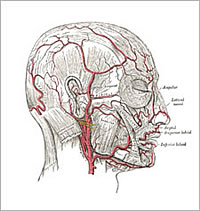The Impact of a Stroke on Life Insurance Rates or Applying for Life Insurance After a Stroke

Understanding Strokes
Stroke is a type of cardiovascular disease that affects the arteries leading to and within the brain. A stroke occurs when a blood vessel that carries oxygen and nutrients to the brain is either blocked by a clot or bursts. When the brain cannot get the blood (and oxygen) it needs due to the stroke, brain cells begin to deteriorate and may even cause death.
All strokes are not alike. There are three types of strokes: ischemic, hemorrhagic and transient. The most common type, causing 83 percent of all strokes, is an ischemic stroke. Ischemic strokes occur as a result of an obstruction within a blood vessel supplying blood to the brain. The obstruction is caused by atherosclerosis, a condition which causes fatty deposits (plaque) to build-up on blood vessel walls. When plaque breaks free, two different variations of clots can be formed:
- Thrombus: A clot that stays in place in the brain
- Embolism: A clot that breaks loose and moves through the bloodstream to the brain
A second major cause of stroke, accounting for approximately 17 percent of cases, is called hemorrhagic stroke. Hemorrhagic stroke occurs when small blood vessels in the brain become weak and burst due to aneurysms or arteriovenous malformations (AVMs). An aneurysm occurs when the weakened wall of a blood vessel balloons to the point of rupture. An AVM is a cluster of abnormally formed blood vessels which are prone to rupturing. In either scenario, after a blood vessel ruptures, the flow of blood released causes damage to brain cells as it accumulates and compresses brain tissue.
A third type of stroke, called transient ischemic attack (TIA), is considered a minor or warning stroke. During a TIA, a person may be experience the conditions that normally result in an ischemic stroke along with similar symptoms, however, for some reason the blood clot occurs lasts only for a short time and the body manages to clear it through normal body mechanisms. Even though the symptoms disappear after a short time, usually within 24 hours, TIAs are strong indicators that a major stroke may be forthcoming. Medical treatment should be initiated immediately to prevent a stroke from occurring.
Other related medical conditions (or medical terminology) include Cerebro Vascular Accident (CVA), Mini-Stroke, Transient Ischemic Attack (TIA), Cardiovascular Disease, and Vascular Disease. Learn more information on receiving a term life insurance quote with these medical conditions from our life insurance specialists.
Risk Factors for Stroke
High blood pressure is the number one risk factor for stroke. Aging, a family history of stroke, smoking, diabetes, high cholesterol, and heart disease also increase the likelihood of a person experiencing a stroke. Certain medications, such as birth control, can increase the chances of clot formation and stroke. Men have more strokes than women; however, women are at greater risk of stroke during pregnancy and the weeks immediately after pregnancy. Cocaine use, alcohol abuse, head injury and bleeding disorders all increase the risk of bleeding into the brain and possible stroke.
Stroke Symptoms and Treatment
If a stroke is suspected, getting the person to an emergency room immediately is imperative. Physicians will determine if the stroke is due to hemorrhaging or blood clot, and administer appropriate medication. Starting drug therapy within three hours of the stroke will result in the best outcome. It is often difficult to recognize the when a stroke has occurred, however, the sudden onset of one or more of the following symptoms should raise a red flag signaling possible stroke and immediate medical attention should be sought:
- Weakness or paralysis of an arm, leg, side of the face, or any part of the body
- Numbness, tingling or decreased sensation
- Vision changes
- Slurred speech, inability to speak or understand speech, difficulty reading or writing
- Swallowing difficulties or drooling
- Loss of memory
- Vertigo(spinning sensation)
- Loss of balance or coordination
- Personality changes
- Mood changes
- Lethargy or loss of consciousness
- Uncontrollable movements or eyelid drooping
Stroke’s Affect on Insurability
Insurers will need specific information about the applicant’s medical history including the type of stroke, the applicant’s age at the time of the stroke, any permanent damage resulting from the stroke, such as paralysis of a limb or impaired speech, as well as a list of prescribed medications to treat symptoms.The existence of pre-existing medical conditions, such as diabetes and hypertension, are major risk factors for stroke and must be disclosed. Insurers will want to know if these conditions are being medically managed successfully. Certain medical conditions, such as irregular heart beat, disease of the heart valves or cardiac arrhythmia, in combination with a history of stroke, will likely render an applicant uninsurable. Following a CVA, applicants are usually deferred for at least one year before being considered for a policy. If more than one stroke has been suffered, the applicant may be denied. Applicants who have had a TIA will need to disclose the underlying cause of the incident, their age at the time of the incident, the number of TIAs and any co-existing medical conditions. Applications will usually be deferred for six months following a TIA or for a year if there were multiple incidents. After the waiting period, applicants may pay a premium rate for a period of time following the last episode.
How Can MEG Financial Help?
At MEG Financial, we have worked with many individuals across the country that have had related histories and have helped many obtain fairly priced life insurance. A number of these clients previously attempted to buy life insurance elsewhere but were either turned down or asked to pay a significantly higher rate. Our experience helping others with related problems is invaluable to you in identifying the insurance company that will treat you most fairly.
For more specific information or to obtain a custom quote, call MEG Financial today at (877) 583-3955. You may also submit this short form and an independent insurance agent will personally contact you to go over any questions or other concerns.

 Speak with an experienced advisor!
Speak with an experienced advisor! 


